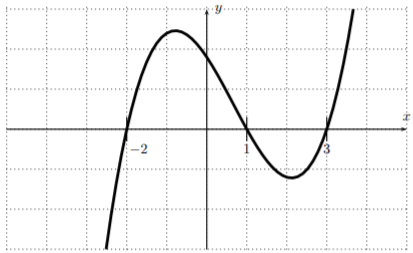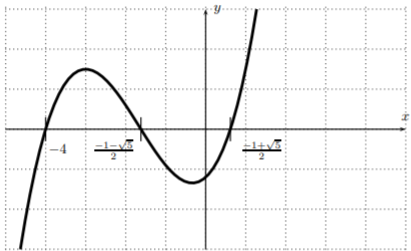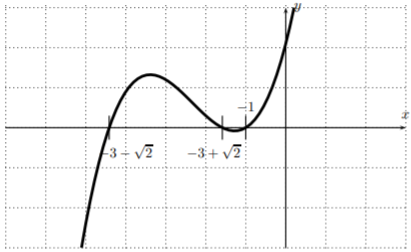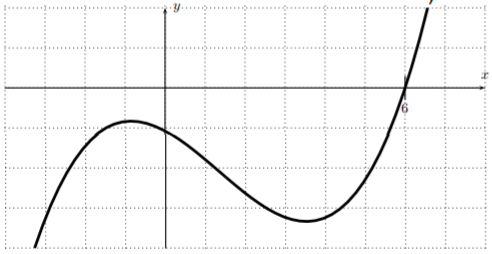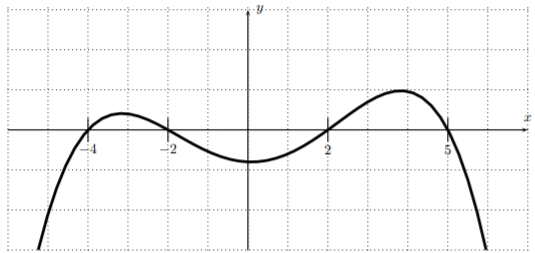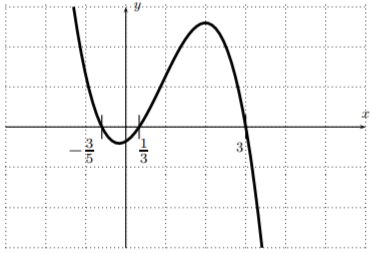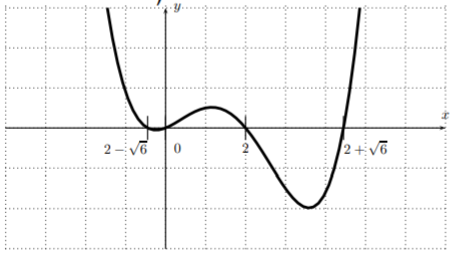10.3: Exercises
- Page ID
- 49012
\( \newcommand{\vecs}[1]{\overset { \scriptstyle \rightharpoonup} {\mathbf{#1}} } \)
\( \newcommand{\vecd}[1]{\overset{-\!-\!\rightharpoonup}{\vphantom{a}\smash {#1}}} \)
\( \newcommand{\dsum}{\displaystyle\sum\limits} \)
\( \newcommand{\dint}{\displaystyle\int\limits} \)
\( \newcommand{\dlim}{\displaystyle\lim\limits} \)
\( \newcommand{\id}{\mathrm{id}}\) \( \newcommand{\Span}{\mathrm{span}}\)
( \newcommand{\kernel}{\mathrm{null}\,}\) \( \newcommand{\range}{\mathrm{range}\,}\)
\( \newcommand{\RealPart}{\mathrm{Re}}\) \( \newcommand{\ImaginaryPart}{\mathrm{Im}}\)
\( \newcommand{\Argument}{\mathrm{Arg}}\) \( \newcommand{\norm}[1]{\| #1 \|}\)
\( \newcommand{\inner}[2]{\langle #1, #2 \rangle}\)
\( \newcommand{\Span}{\mathrm{span}}\)
\( \newcommand{\id}{\mathrm{id}}\)
\( \newcommand{\Span}{\mathrm{span}}\)
\( \newcommand{\kernel}{\mathrm{null}\,}\)
\( \newcommand{\range}{\mathrm{range}\,}\)
\( \newcommand{\RealPart}{\mathrm{Re}}\)
\( \newcommand{\ImaginaryPart}{\mathrm{Im}}\)
\( \newcommand{\Argument}{\mathrm{Arg}}\)
\( \newcommand{\norm}[1]{\| #1 \|}\)
\( \newcommand{\inner}[2]{\langle #1, #2 \rangle}\)
\( \newcommand{\Span}{\mathrm{span}}\) \( \newcommand{\AA}{\unicode[.8,0]{x212B}}\)
\( \newcommand{\vectorA}[1]{\vec{#1}} % arrow\)
\( \newcommand{\vectorAt}[1]{\vec{\text{#1}}} % arrow\)
\( \newcommand{\vectorB}[1]{\overset { \scriptstyle \rightharpoonup} {\mathbf{#1}} } \)
\( \newcommand{\vectorC}[1]{\textbf{#1}} \)
\( \newcommand{\vectorD}[1]{\overrightarrow{#1}} \)
\( \newcommand{\vectorDt}[1]{\overrightarrow{\text{#1}}} \)
\( \newcommand{\vectE}[1]{\overset{-\!-\!\rightharpoonup}{\vphantom{a}\smash{\mathbf {#1}}}} \)
\( \newcommand{\vecs}[1]{\overset { \scriptstyle \rightharpoonup} {\mathbf{#1}} } \)
\( \newcommand{\vecd}[1]{\overset{-\!-\!\rightharpoonup}{\vphantom{a}\smash {#1}}} \)
\(\newcommand{\avec}{\mathbf a}\) \(\newcommand{\bvec}{\mathbf b}\) \(\newcommand{\cvec}{\mathbf c}\) \(\newcommand{\dvec}{\mathbf d}\) \(\newcommand{\dtil}{\widetilde{\mathbf d}}\) \(\newcommand{\evec}{\mathbf e}\) \(\newcommand{\fvec}{\mathbf f}\) \(\newcommand{\nvec}{\mathbf n}\) \(\newcommand{\pvec}{\mathbf p}\) \(\newcommand{\qvec}{\mathbf q}\) \(\newcommand{\svec}{\mathbf s}\) \(\newcommand{\tvec}{\mathbf t}\) \(\newcommand{\uvec}{\mathbf u}\) \(\newcommand{\vvec}{\mathbf v}\) \(\newcommand{\wvec}{\mathbf w}\) \(\newcommand{\xvec}{\mathbf x}\) \(\newcommand{\yvec}{\mathbf y}\) \(\newcommand{\zvec}{\mathbf z}\) \(\newcommand{\rvec}{\mathbf r}\) \(\newcommand{\mvec}{\mathbf m}\) \(\newcommand{\zerovec}{\mathbf 0}\) \(\newcommand{\onevec}{\mathbf 1}\) \(\newcommand{\real}{\mathbb R}\) \(\newcommand{\twovec}[2]{\left[\begin{array}{r}#1 \\ #2 \end{array}\right]}\) \(\newcommand{\ctwovec}[2]{\left[\begin{array}{c}#1 \\ #2 \end{array}\right]}\) \(\newcommand{\threevec}[3]{\left[\begin{array}{r}#1 \\ #2 \\ #3 \end{array}\right]}\) \(\newcommand{\cthreevec}[3]{\left[\begin{array}{c}#1 \\ #2 \\ #3 \end{array}\right]}\) \(\newcommand{\fourvec}[4]{\left[\begin{array}{r}#1 \\ #2 \\ #3 \\ #4 \end{array}\right]}\) \(\newcommand{\cfourvec}[4]{\left[\begin{array}{c}#1 \\ #2 \\ #3 \\ #4 \end{array}\right]}\) \(\newcommand{\fivevec}[5]{\left[\begin{array}{r}#1 \\ #2 \\ #3 \\ #4 \\ #5 \\ \end{array}\right]}\) \(\newcommand{\cfivevec}[5]{\left[\begin{array}{c}#1 \\ #2 \\ #3 \\ #4 \\ #5 \\ \end{array}\right]}\) \(\newcommand{\mattwo}[4]{\left[\begin{array}{rr}#1 \amp #2 \\ #3 \amp #4 \\ \end{array}\right]}\) \(\newcommand{\laspan}[1]{\text{Span}\{#1\}}\) \(\newcommand{\bcal}{\cal B}\) \(\newcommand{\ccal}{\cal C}\) \(\newcommand{\scal}{\cal S}\) \(\newcommand{\wcal}{\cal W}\) \(\newcommand{\ecal}{\cal E}\) \(\newcommand{\coords}[2]{\left\{#1\right\}_{#2}}\) \(\newcommand{\gray}[1]{\color{gray}{#1}}\) \(\newcommand{\lgray}[1]{\color{lightgray}{#1}}\) \(\newcommand{\rank}{\operatorname{rank}}\) \(\newcommand{\row}{\text{Row}}\) \(\newcommand{\col}{\text{Col}}\) \(\renewcommand{\row}{\text{Row}}\) \(\newcommand{\nul}{\text{Nul}}\) \(\newcommand{\var}{\text{Var}}\) \(\newcommand{\corr}{\text{corr}}\) \(\newcommand{\len}[1]{\left|#1\right|}\) \(\newcommand{\bbar}{\overline{\bvec}}\) \(\newcommand{\bhat}{\widehat{\bvec}}\) \(\newcommand{\bperp}{\bvec^\perp}\) \(\newcommand{\xhat}{\widehat{\xvec}}\) \(\newcommand{\vhat}{\widehat{\vvec}}\) \(\newcommand{\uhat}{\widehat{\uvec}}\) \(\newcommand{\what}{\widehat{\wvec}}\) \(\newcommand{\Sighat}{\widehat{\Sigma}}\) \(\newcommand{\lt}{<}\) \(\newcommand{\gt}{>}\) \(\newcommand{\amp}{&}\) \(\definecolor{fillinmathshade}{gray}{0.9}\)- Find all rational roots of \(f(x)=2x^3-3x^2-3x+2\).
- Find all rational roots of \(f(x)=3x^3-x^2+15x-5\).
- Find all rational roots of \(f(x)=6x^3+7x^2-11x-12\).
- Find all real roots of \(f(x)=6x^4+25x^3+8x^2-7x-2\).
- Find all real roots of \(f(x)=4x^3+9x^2+26x+6\).
- Answer
-
- \(x=-1, x=2, x=\dfrac{1}{2}\)
- \(x=\dfrac{1}{3}\)
- \(x=\dfrac{-3}{2}, x=-1, x=\dfrac{4}{3},\)
- \(x=\dfrac{1}{2}, x=\dfrac{-2}{3}, x=-2+\sqrt{3}, x=-2-\sqrt{3}\)
- \(x=-\dfrac{1}{4}\)
Find a root of the polynomial by guessing possible candidates of the root.
- \(f(x)=x^5-1\)
- \(f(x)=x^4-1\)
- \(f(x)=x^3-27\)
- \(f(x)=x^3+1000\)
- \(f(x)=x^4-81\)
- \(f(x)=x^3-125\)
- \(f(x)=x^{5}+32\)
- \(f(x)=x^{777}-1\)
- \(f(x)=x^2+64\)
- Answer
-
- \(x = 1\)
- \(x = 1\) or \(x = −1\)
- \(x = 3\)
- \(x = −10\)
- \(x = 3\) or \(x = −3\)
- \(x = 5\)
- \(x = −2\)
- \(x = 1\)
- \(x = 8i\) or \(x = −8i\)
Find the roots of the polynomial and use it to factor the polynomial completely.
- \(f(x)=x^3-7x+6\)
- \(f(x)=x^3-x^2-16x-20\)
- \(f(x)=x^4-5x^2+4\)
- \(f(x)=x^3+x^2-5x-2\)
- \(f(x)=2x^3+x^2-7x-6\)
- \(f(x)=12x^3+49x^2-2x-24\)
- \(f(x)=x^4-1\)
- \(f(x)=x^5-6x^4+8x^3+6x^2-9x\)
- \(f(x)=x^3-27\)
- \(f(x)=x^4+2x^2-15\)
- Answer
-
- \(f(x)=(x-2)(x-1)(x+3)\)
- \(f(x)=(x-5)(x+2)^{2}\)
- \(f(x)=(x-1)(x+1)(x-2)(x+2)\)
- \(f(x)=(x-2)\left(x-\dfrac{-3+\sqrt{5}}{2}\right)\left(x-\dfrac{-3-\sqrt{5}}{2}\right)\)
- \(f(x)=2\left(x+\dfrac{3}{2}\right)(x+1)(x-2)\)
- \(f(x)=12\left(x-\dfrac{2}{3}\right)\left(x+\dfrac{3}{4}\right)(x+4)\)
- \(f(x)=(x-1)(x+1)(x-i)(x+i)\)
- \(f(x)=x(x-1)(x+1)(x-3)^{2}\)
- \(f(x)=(x-3)\left(x-\dfrac{-3+3 \sqrt{3} \cdot i}{2}\right)\left(x-\dfrac{-3-3 \sqrt{3} \cdot i}{2}\right)\)
- \(f(x)=(x-\sqrt{3})(x+\sqrt{3})(x-\sqrt{5} \cdot i)(x+\sqrt{5} \cdot i)\)
Find the exact roots of the polynomial; write the roots in simplest radical form, if necessary. Sketch a graph of the polynomial with all roots clearly marked.
- \(f(x)=x^3-2x^2-5x+6\)
- \(f(x)=x^3+5x^2+3x-4\)
- \(f(x)=-x^3+5x^2+7x-35\)
- \(f(x)=x^3+7x^2+13x+7\)
- \(f(x)=2x^3-8x^2-18x-36\)
- \(f(x)=x^4-4x^2+3\)
- \(f(x)=-x^4+x^3+24x^2-4x-80\)
- \(f(x)=7x^3-11x^2-10x+8\)
- \(f(x)=-15x^3+41x^2+15x-9\)
- \(f(x)=x^4-6x^3+6x^2+4x\)
- Answer
-
Find a polynomial \(f\) that fits the given data.
- \(f\) has degree \(3\). The roots of \(f\) are precisely \(2\), \(3\), \(4\). The leading coefficient of \(f\) is \(2\).
- \(f\) has degree \(4\). The roots of \(f\) are precisely \(-1\), \(2\), \(0\), \(-3\). The leading coefficient of \(f\) is \(-1\).
- \(f\) has degree \(3\). \(f\) has roots \(-2\), \(-1\), \(2\), and \(f(0)=10\).
- \(f\) has degree \(4\). \(f\) has roots \(0\), \(2\), \(-1\), \(-4\), and \(f(1)=20\).
- \(f\) has degree \(3\). The coefficients of \(f\) are all real. The roots of \(f\) are precisely \(2+5i\), \(2-5i\), \(7\). The leading coefficient of \(f\) is \(3\).
- \(f\) has degree \(3\). The coefficients of \(f\) are all real. \(f\) has roots \(i\), \(3\), and \(f(0)=6\).
- \(f\) has degree \(4\). The coefficients of \(f\) are all real. \(f\) has roots \(5+i\) and \(5-i\) of multiplicity \(1\), the root \(3\) of multiplicity \(2\), and \(f(5)=7\).
- \(f\) has degree \(4\). The coefficients of \(f\) are all real. \(f\) has roots \(i\) and \(3+2i\).
- \(f\) has degree \(6\). \(f\) has complex coefficients. \(f\) has roots \(1+i\), \(2+i\), \(4-3i\) of multiplicity \(1\) and the root \(-2\) of multiplicity \(3\).
- \(f\) has degree \(5\). \(f\) has complex coefficients. \(f\) has roots \(i\), \(3\), \(-7\) (and possibly other roots).
- \(f\) has degree \(3\). The roots of \(f\) are determined by its graph:
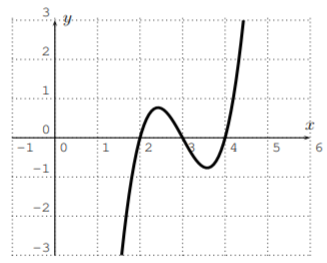
- \(f\) has degree \(4\). The coefficients of \(f\) are all real. The leading coefficient of \(f\) is 1. The roots of \(f\) are determined by its graph: (see Section 9.3).
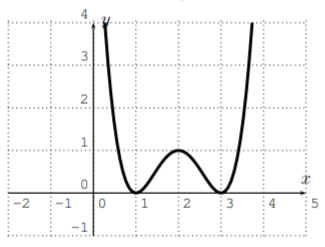
- \(f\) has degree \(4\). The coefficients of \(f\) are all real. \(f\) has the following graph:
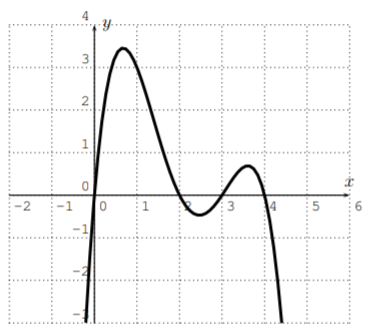
- Answer
-
- \(f(x)=2(x-2)(x-3)(x-4)\)
- \(f(x)=(-1) \cdot x(x-2)(x+1)(x+3)\)
- \(f(x)=\left(-\dfrac{5}{2}\right) \cdot(x-2)(x+2)(x+1)\)
- \(f(x)=-2 \cdot x(x-2)(x+1)(x+4)\)
- \(f(x)=3(x-7)(x-(2+5 i))(x-(2-5 i))\)
- \(f(x)=(-2) \cdot(x-i)(x+i)(x-3)\)
- \(f(x)=\frac{7}{4} \cdot(x-(5+i))(x-(5-i))(x-3)^{2}\)
- \(f(x)=(x-i)(x+i)(x-(3+2 i))(x-(3-2 i))\) (other correct answers are possible, depending on the choice of the first coefficient)
- \(f(x)=(x-(1+i))(x-(2+i))(x-(4-3 i))(x+2)^{3}\) (other correct answers are possible, depending on the choice of the first coefficient)
- \(f(x)=(x-i)(x-3)(x+7)^{2}\) (other correct answers are possible, depending on the choice of the first coefficient and the fourth root)
- \(f(x)=(x-2)(x-3)(x-4)\) (other correct answers are possible, depending on the choice of the first coefficient)
- \(f(x)=(x-1)^{2}(x-3)^{2}\)
- \(f(x)=-x(x-1)(x-3)(x-4)\) (other correct answers are possible, depending on the choice of the first coefficient)



